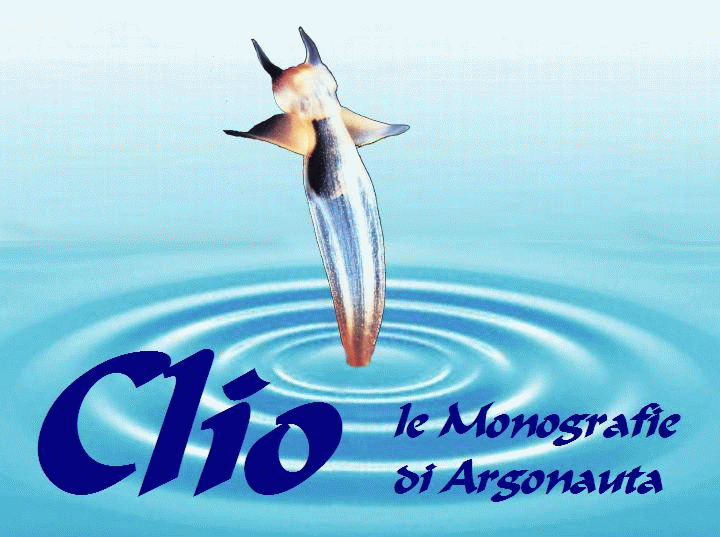
Clio supplemento a Argonauta n. 1-6 2012
 |
 |
|
Fig. 4 Burroving. Ricostruzione dei movimenti degli Aporrhais durante la fase di penetrazione nel substrato; Burroving. Reconstruction of the movements of the Aporrhais during the phase of crossing the substratum ; (A) le frecce Indicano la penetrazione della conchiglia in senso obliquo e la pressione esercitata dal piede sul substrato; the arrows indicate the penetration of the shell in an oblique direction and the pressare exercised by the foot in the substratum; (B) successivi movimenti necessari al deposito dei detriti e materiali sulla conchiglia; successive movements necessary to deposit the detritus and other material on the shell; (C) completamento del burrowing. completion of burrowing. Tale metodo viene ottenuto con una progressione di movimenti che si susseguono con intervalli di 40 secondi o di un minuto uno dall'altro. Detta frequenza può essere ulteriormente aumentata a seconda del grado di permeabilità del substrato. Contemporaneamente, con piccoli movimenti, il materiale del substrato viene via via innalzato e depositato sulla conchiglia. Tutta la spira e la parte dorsale sono ancora fuori dal substrato. Ciò nonostante, queste si trovano ormai in fondo ad una notevole depressione, dentro la quale il materiale rimosso scende e si deposita sulla conchiglia, coprendola. Il sistema del burrowíng termina con una serie di piccoli movimenti di assestamento intesi ad occultare definitivamente il mollusco. Successivi movimenti consistono nell'innalzamento o nell'abbassamento del labbro e, quindi, delle appendici labiali ormai nel substrato. Tali movimenti sono ottenuti con espulsione d'acqua dal canale posteriore ad opera del sifone. Con questo sistema, l'Aporrhais attraverso il substrato crea la prima apertura di collegamento con l'ambiente soprastante. La formazione di questa apertura esalante attraverso il substrato; determina un momento di stasi nel burrowing. Il mollusco, dopo aver portato a termine l'espulsione di ogni detrito, sembra cessare la sua attività. Il secondo e più importante movimento consiste nell'apertura inalante ad opera sempre del sifone, particolarmente estensibile. Osservando la conchiglia dorsalmente, appare subito chiaro che tale apertura viene praticata nell'area del canale sifonale compresa tra l'appendice sifonale stessa e la successiva digitazione labiale. |
This method is carried out by a progression of movements which follow each other at intervals of between forty seconds and one minute. This frequency may be increased according to the degree of permeability of the substratum. At the same time, with small movements, the material of the substratum is gradually lifted and deposited on the shell. The whole spire and the dorsal part of the shell are stilI out of the substratum. Despite this they are by now at the bottom of a considerable depression, in which the material removed descends and is deposited on the shell, thus covering it. The system of burrowing ends with a series of small settling movements meant to conceal the mollusc. Successive movements consist in the raising and lowering of the lip and then of the labial appendices, by now in the substratum. These movements are achieved by the expulsion of water through the substratum, from the posterior canal by the syphon. By this system the Aporrhais creates the first aperture through the substratum connecting with the environment above. The formation of this exhalation aperture through the substratum determines a pause in the burrowing. The mollusc after having finished the expulsion of all detritus, seems to cease its movements. The second and most important movement consists of the inhalation aperture, also effected by the particularly extendable syphon. Looking at. the shelI from the back it is immediately clear that this opening is made in the area of the syphon canal between the syphon appendix itself and' the successive labial digitation. |
